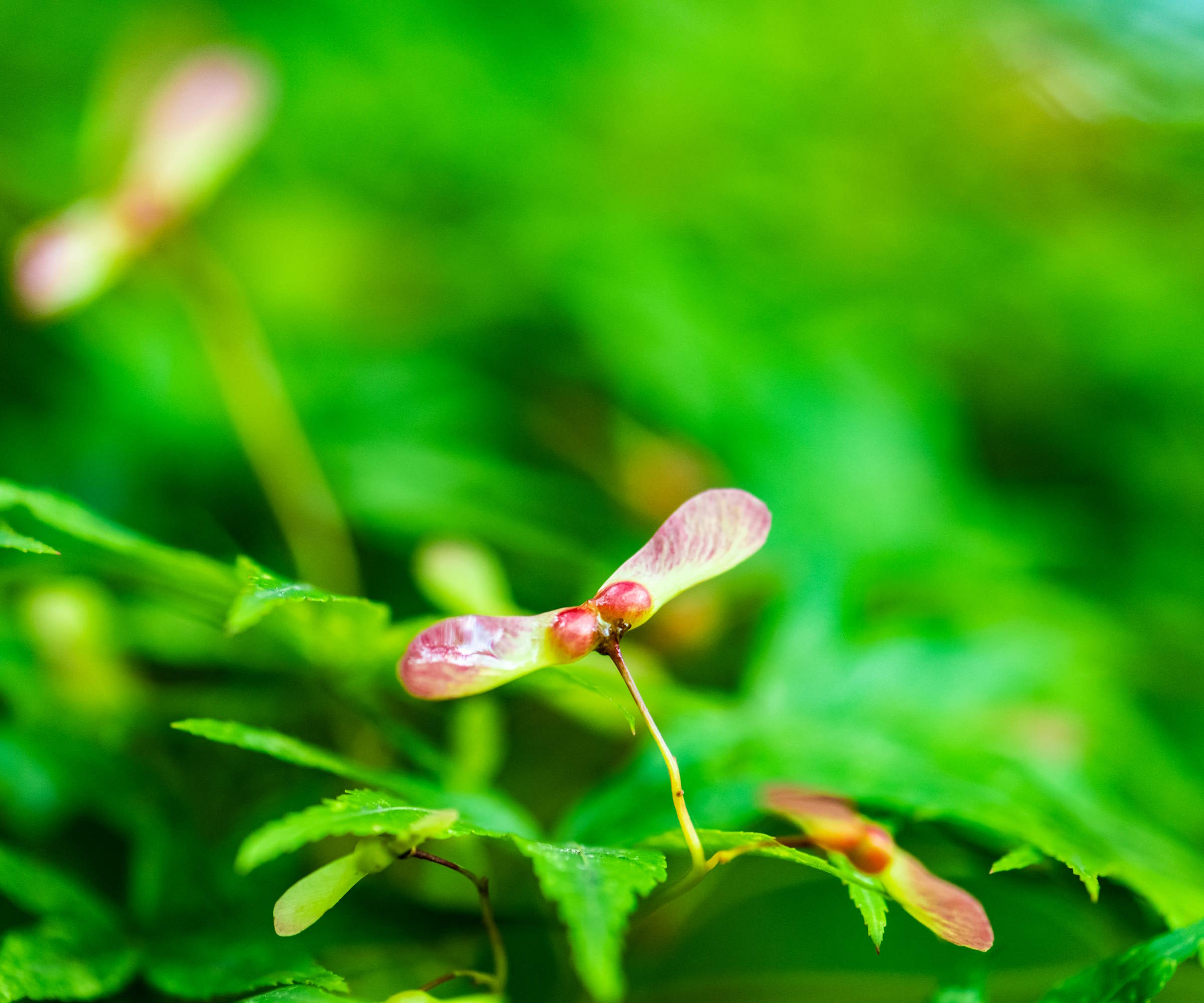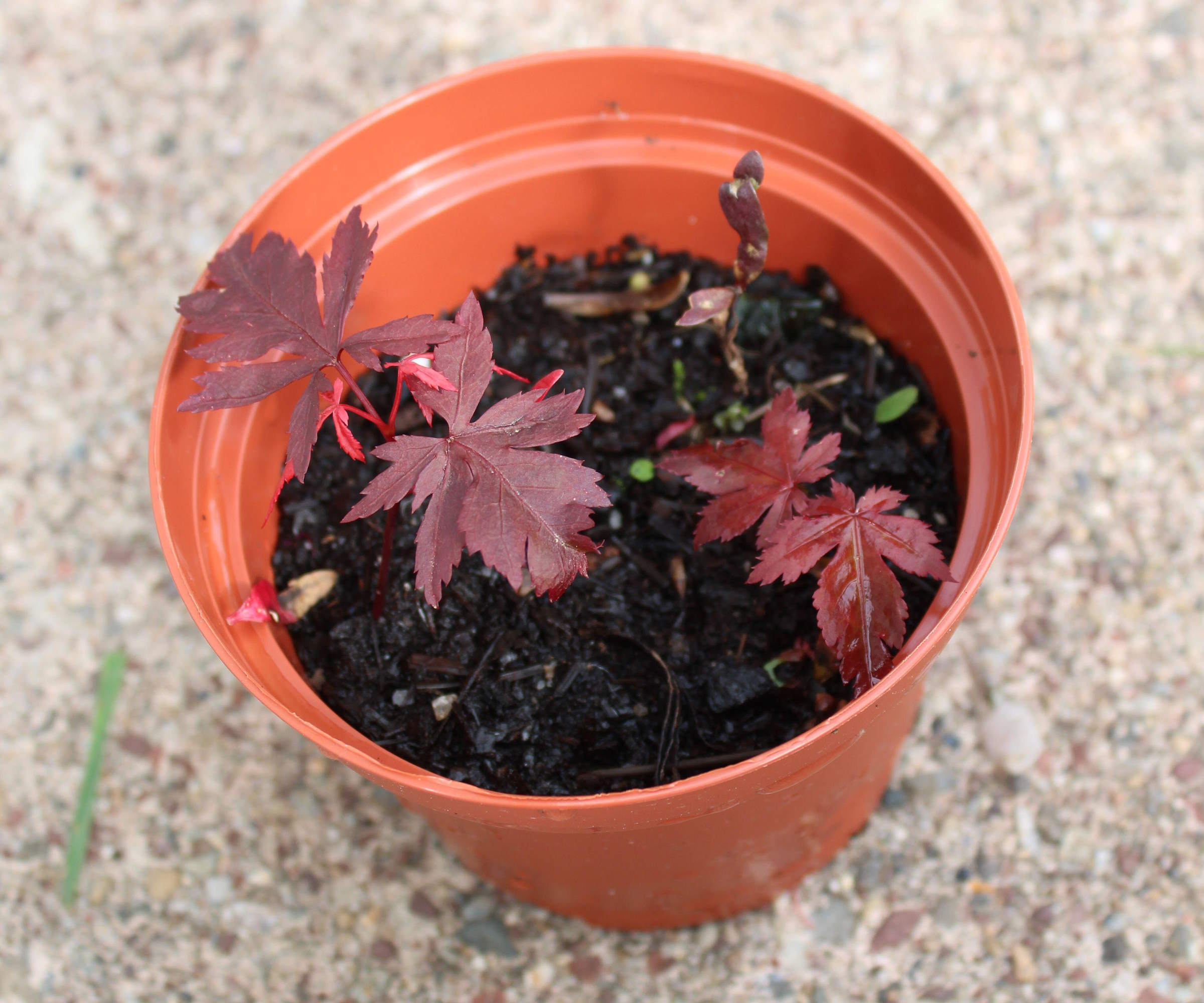
Japanese maples are much-adored primarily for their glorious colors in eye-catching shades of red, burgundy, orange, ochre, and yellow. There is such variety, not only in terms of color but also size, as the trees range from 5 to 25 feet, and the smallest types are popular as bonsai trees.
Most Japanese maple trees are purchased as small trees from garden centers, nurseries, or online to plant out as part of people’s backyard ideas. It is also possible to grow Japanese maples from seeds, though it does require patience and attention to detail.
An eye for detail is important, as there are some important steps to follow to increase the likelihood of Japanese maple seeds germinating and growing happily and healthily to maturity.

Can you grow Japanese maples from seed?
Yes, you can grow Japanese maples from seed. However, you cannot replicate a specific variety of Japanese maple by collecting seed and sowing it.
Named cultivars of Japanese maples you buy are grafted and the seeds will not replicate the genetics of that specific tree. It can still be worthwhile growing from seed though, as it is an enjoyable and rewarding task and you still get a fantastic Japanese maple to either grow in your backyard or nurture as a bonsai tree.
How to grow a Japanese maple from seed

Step one in growing a Japanese maple from seed is to collect the seeds in the fall. The seeds are cased in wing-shaped samaras that help to distribute the seed. These pods can be picked off the tree or collected once they have fallen from the tree.
Lorraine Thompson, a garden expert and founder of Best Florist Review, recommends one way to harvest the seeds from the winged pod when they ripen in fall.
‘The pods will start to turn brown and split open when they are ripe,’ says Lorraine. ‘You can collect the seeds by shaking the pods over a paper bag or container. Once you have collected the seeds, you will need to clean them by removing any debris.’
It is important to wait until the seed pods have turned brown and dry to collect the seed, as they may not be viable until this point. Collecting and trying to germinate unripe seeds will likely result in unsuccessful germination.
How do you germinate Japanese maple seeds?

Once you have collected the ripe seeds, there is an important next step to follow - and that is to prepare the seeds for sowing. This involves soaking the seeds and then giving them a period of cold stratification. It is important not to skip the cold treatment, as it can affect how the seeds germinate - if at all.
Start by soaking the seeds in warm water for around 24 hours. This is to soften the tough outer coating the seeds have. Naturally these seeds can take up to two years to germinate, therefore soaking and cold treating them speeds up this process.
‘Cold stratification involves refrigerating the seeds within a moist medium for about 90 to 120 days, mimicking the harshness of winter, which is essential to wake the seeds from their dormancy,’ explains Alexander Testel from Frugal Frontier. ‘Post-stratification, the seeds are ready for germination.’
After 24 hours in warm water, select those seeds which have settled at the bottom and place them in a plastic bag or container filled with moist growing medium - such as compost, peat moss, or vermiculite. Put the container in the refrigerator for 100 days.
Cold stratification can be done outdoors rather than in the refrigerator, but it does take longer. If you live in a cold climate, the seeds can be sown outdoors directly after the 24 hours soaking and the natural cycle of winter will treat the seeds and prepare them to start germinating in spring.
To sow the Japanese maple seeds outdoors in fall, sow directly into a seedbed that has been weeded and raked level, or into pots filled with a quality seed compost. The pots can be stored in a protected position, such as a cold frame, and they will start to germinate in spring.
After their period of cold stratification, the seeds can alternatively be sown indoors in spring. This can be done in a greenhouse or indoors on a warm or bright windowsill. Fill trays or pots with a good seed compost - which is always the best soil to start seeds in. Sow the seeds half-an-inch deep with a covering of compost or vermiculite - but do not make the seed sowing mistake of planting them too deep as light is essential for germination.
Caring for Japanese maple seedlings

Japanese maple seedlings should emerge within 4-8 weeks. Keep the pots well watered, but not waterlogged. Once they have germinated, place them in a shady spot as direct sunlight can harm the delicate seedlings.
Once the seedlings have developed a few sets of true leaves and are large enough to handle, it is time to transplant seedlings into larger individual pots for them to grow on. At this stage you can fertilize the seedlings with a light fertilizer - such as a balanced feed applied at 50% of the normal rate - to help provide a boost of nutrients to help them grow strong and healthy. An example of one feed that can be used at a diluted level is the Miracle-Gro Water Soluble All Purpose Plant Food, available at Amazon.
When the young Japanese maples are around 8-10 inches tall they can be planted out into the garden after a period of hardening off. The ideal time to plant young trees is in fall or spring, when the ground is warm and moist. Plant into a sheltered sunny or partial shade spot with a rich, moist, and well-draining soil type. The seedlings do have very particular needs and require regular monitoring to ensure they survive to grow into full size maples.
‘You may need to provide shade and water to the seedlings until they are strong enough to thrive on their own,' warns Mike Lansing, Managing Director of Planters Digest. ‘Even so, you will most likely lose some of your early crop. However, with patient and meticulous care, you should be able to raise a large number of healthy Japanese Maples from seed.’
Mulch around the young Japanese maple after planting to help retain moisture in the soil and prevent competition from weeds. Newly-planted maples are likely to need watering during hot periods for the first two years after planting.
Espoma Organic Seed Starter is a premium blend of natural ingredients specially formulated to grow seedlings and promote strong root growth
FAQs
How long do Japanese maples take to grow from seed?
Japanese maples are slow-growing, which helps to make dwarf varieties suitable as trees for small gardens or trees to grow in pots. There are types that can grow up to 25 feet in height and take around 50 years to get to that level, however, smaller varieties can be more around five feet and will reach their intended size within 5-10 years from being grown from seed.
Growing Japanese maples from seeds will require patience and a keen eye for detail and, unfortunately, success is not guaranteed. Not all seeds will germinate successfully and they do require specific conditions to keep the seedlings happy and healthy.
However, if you like a challenge and enjoy growing plants from seed, the end result may be worth all the time and effort for the glorious fall color you can enjoy from a maple.







